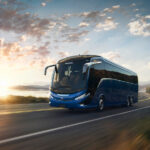Structuring sustainability in Africa’s image
Structuring sustainability in Africa’s image
At times, it feels a little bit like everyone is throwing all their eggs into the electric mobility basket, and that South Africa and other developing countries are clinging to the coattails of European advances, instead of visualising their own path forward.
While there is obviously no need to reinvent the wheel when it comes to renewable energy and greener transport, South Africa has an opportunity to create sustainable transport solutions in its own image.
Immediate challenges
As pointed out by SABOA’s Sharmini Naidoo, for example, switching to electric public transport systems will require a huge technological and cultural change in developing economies like South Africa and the rest of Africa. As she notes, this will further require a balance between introducing new electric vehicles (EVs) and phasing out old internal combustion engine (ICE) vehicles, as well as consideration for various consequences linked to this transition, including challenges related to the workforce and infrastructure requirements.
Some of the challenges faced by transport operators looking to integrate EVs into their fleets are magnified in South Africa. Long-haul road freight operations continue to have understandable reservations regarding the range of electric trucks, even though there have been significant advances in recent years, as continued R&D has boosted battery ranges and reduced charging times.
The European Environment Agency notes the importance of more closely coupling the road transport and energy sectors, and closely integrating policy and investment decisions across both sectors.
I agree with Naidoo that charging infrastructure is a major challenge for the full integration of electric vehicles into the local commercial vehicle landscape: are there ways of creating a charging infrastructure with a distinctly South African feel? Perhaps strategically positioned truck stops could be converted into small renewable energy power plants supplying the charging needs not only of high volumes of EV road freight, but also recouping some of that energy locally to support the surrounding community. The power would need to be fed into the truck via megawatt chargers in order to minimise the charging time.
Integrating renewable energy
According to New Jersey, US-based infrastructure solutions provider, Utilities One, EVs have massive potential for contributing to sustainable communities and can act as a catalyst for renewable energy integration in various ways.
Vehicle-to-Grid (V2G) technology, for example, allows electric vehicles to contribute power back to the grid by powering bidirectional charging – something that could be of great benefit in our battle against loadshedding, especially in localised areas. “EV owners can sell excess energy stored in their vehicle’s battery during peak demand periods, helping to stabilize the grid and offset energy costs. This bidirectional flow of energy benefits both EV owners and the community, fostering a more resilient and sustainable energy ecosystem,” notes Utilities One. Furthermore, Smart charging stations that are able to communicate with the power grid enable optimised charging and grid integration.
It’s probably unlikely that trucks would have excess energy. But individuals working at transport companies could earn money selling unwanted energy, while helping to support the local power grid… All of this would, of course, require government to release (or at the very least adjust) its grip on the power monopoly to allow individual users to connect to the grid and profit from their contributions.
Energy storage on wheels
Smart EV charging pioneer Virta, headquartered in Helsinki, Finland, expands on this by noting that EV batteries are the most cost-efficient form of energy storage because no additional hardware investments are required. “With V2G, we can utilise the battery capacity up to 10x more efficiently than with regular smart charging. Vehicle-to-grid technology enables us to make the best use of the existing population of vehicles,” it points out, adding that by 2030, there could be up to 250 million EVs globally.
“That means that we’ll have around 250 million tiny energy storages on wheels. Research actually shows that by the end of this decade, EV batteries should be able to meet the demand for short-term energy storage,” Virta emphasises.
Virta goes on to highlight an extension of this V2G technology: V2X stands for Vehicle-to-Everything, meaning that EV fleets could even potentially be used to power warehouses, offices, security lights, and other infrastructure. Once again, this could help to alleviate concerns of an overloaded power grid by removing demand for electricity, while simultaneously benefiting the company budget.
Another potentially beneficial avenue to pursue, says Utilities One, relates to “demand response programmes” whereby EV owners are incentivised to charge their vehicles when electricity demand is low or renewable energy production is high. “By aligning electric vehicle charging with renewable energy availability, communities can reduce the reliance on non-renewable energy sources and embrace a greener energy mix.”
Distribution trucks, for instance, could be charged between 2 and 4am, when most South Africans are asleep and not in need of power. There may also be other opportunities to apply this principle within the transport industry in the future, provided an accord can be reached with whichever entity is holding the keys to our power grid…
Harnessing renewable natural resources
South Africa enjoys a wealth of the two most prevalent renewable energy sources – sun and wind. While these do not come without their own problems, they do present an opportunity to wean ourselves off the far greater and more present dangers posed by a continued reliance on coal and oil. If renewable energy sources can be effectively harnessed by transport companies and integrated with their EV fleets via V2G and V2X technology it may help to lower their dependence on the national power grid if, indeed, that continues to stutter over the coming years – whether or not it continues as a state-owned entity (SOE).
Utilities One advocates the integration of EVs with renewable energy sources, saying that this “can create a virtuous cycle, promoting sustainability and reducing dependence on fossil fuels”, and adding that smart grid and vehicle-to-grid system technologies can help to further increase the efficiency of this collaboration.
According to studies in Europe, the avoided carbon monoxide (CO) emissions in the road transport sector outweigh the higher emissions from electricity generation, although in countries with highly fluctuating renewable energy supplies, coordinating the energy demand from electric vehicles may become a major challenge. This will be something to consider when implementing any shift towards renewable energy production.
Getting rail back on track
Much has been said and written, including by Leonard de Villiers, and our columnists Nick Porée and Chris Hattingh, about South Africa’s ailing rail network and the pressure the collapse of the freight rail system has placed on sectors like road freight haulage and SA’s ports.
Much more needs to be done to facilitate the transport industry’s evolution into an environmentally conscious and socially aware sector of the economy that can still maintain and fulfil its critical economic and logistical obligations. This will require real commitment from the government in particular, to allow the private sector to revitalise our decrepit rail transport and power generation sectors. Not only would this ease the pressure on road freight (and by extension, the manufacturers developing cleaner technologies for commercial vehicles), but it could also lead to an increased focus on more innovative ways to produce and/or source sustainable power.
A future sustainably-powered freight rail network – even if it only connects the major ports with the inland commercial hubs in Gauteng – would massively aid efforts being made by commercial vehicle manufacturers and others within the industry to clean up their act, as well as helping to manage our overwhelmed ports infrastructure.
Researching sustainability
A recent academic review by Koppa et al. (2023) from the University of Johannesburg (UJ) notes that African countries currently lag behind other parts of the world in terms of research into sustainability assessments. South Africa is one of just five countries on the continent with a local sustainability assessment process for infrastructure development – and this was done for the construction industry. The review highlights the need “to create energy, transport and water supply infrastructure sustainability assessment processes that address current sustainability concerns such as climate change, social justice, equity, fairness, and equality”.
The opportunities that would be afforded for South Africa when it comes to investing in sustainable infrastructure are made clear in the UJ review: “The need for sustainability in infrastructure development is not just to address its negative impact to the environment but also to harness the greater opportunity to foster sustainable socio-economic development through infrastructure projects.”
A time for innovation
To truly create a cleaner, greener future, South Africa would be well advised to break free from conservative shackles and forge an innovative, Afro-centric implementation of sustainable transport solutions. EVs and other solutions that harness the potential of Africa’s renewable natural resources and its people – ICE trucks that are powered by green hydrogen, for instance – will maximise the positive effects of the push for a cleaner transport industry.
Obviously, any discussion of the move towards sustainability is highly complex and nuanced. It could probably generate enough content in its own right to fill an entire monthly publication, and this sometimes necessitates painting with a broad brush. So perhaps the most important takeaway is the need for flexibility: the ability to shed old ways of thinking and embrace a forward-looking, long-term approach that recognises that sustainable and integrated modes of transport not only benefit the environment, but also wider society.
This change needs to come from the top down, from leaders who have the best interests of the country and her people at heart and back up their words with actions. We all need to do more to effect a critical shift in mindset and begin to redress the impacts of human-induced climate change. Without the support of those in charge, however, we will have to keep trying to steer a course with one hand tied behind our backs.
Published by
Rowan Watt-Pringle
focusmagsa




